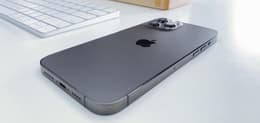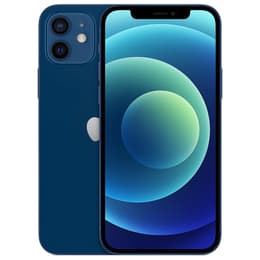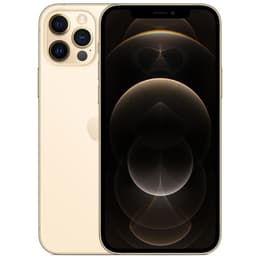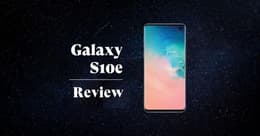
Published on 30 May, 2024 - Thinking about buying one of the iPhone 12 models from 2020 but not sure which one? We will help you find out whether the iPhone 12, 12 Pro, 12 Pro Max or 12 mini is the right one for you.
All about the iPhone 12 models
When did the iPhone 12 come out?
In October 2020, Apple introduced the iPhone 12 models. We already have the 15th generation of the iPhone today - how quickly time flies! Why were the iPhones 12 introduced only in October? This was due to the Corona pandemic, which forced Apple to break with their tradition for the first time. There were several leaks of the iPhone 12 in advance, so only a few real surprises in the end.
What are the four models of the iPhone 12?
We will take a closer look at all of those smartphone models in this overview and will also summarise the most important information of the iPhone 12 series.
👉 We've compared the iPhone 12 with the iPhone 11 and iPhone 13, so take a look there if you're not sure whether one of the older or newer models might suit you better.
Specs overview
Here are the most important technical specifications of the iPhone 12 models:
iPhone 12 | iPhone 12 Mini | iPhone 12 Pro | iPhone 12 Pro Max | |
Display | 6.1-inch Super Retina XDR Display | 5.4-inch Super Retina XDR Display | 6.1-inch Super Retina XDR Display | 6.7-inch Super Retina XDR Display |
Pixel | 2532 x 1170 | 2340 x 1080 | 2532 x 1170 | 2778 x 1284 |
RAM | 4 GB | 4 GB | 6 GB | 6 GB |
Capacity | 64/128/256 GB | 64/128/256 GB | 128/256/512 GB | 128/256/512 GB |
Camera | Dual 12MP camera system: Wide and ultra wide cameras | Dual 12MP camera system: Wide and ultra wide cameras | Triple 12MP camera system: Ultra Wide, Wide, and Telephoto cameras; LIDAR Scanner | Triple 12MP camera system: Ultra Wide, Wide, and Telephoto cameras; LIDAR Scanner |
Aperture | Wide angle: ƒ/1.6 Ultra wide angle: ƒ/2.4 | Wide angle: ƒ/1.6 Ultra wide angle: ƒ/2.4 | Wide angle: ƒ/1.6 Ultra wide angle: ƒ/2.4 Telephoto: ƒ/2.0 | Wide angle: ƒ/1.6 Ultra wide angle: ƒ/2.4 Telephoto: ƒ/2.0 |
Colours | Black, White, (Product)Red, Green, Blue, Purple | Black, White, (Product)Red, Green, Blue, Purple | Silver, Graphite, Gold, Pacific Blue | Silver, Graphite, Gold, Pacific Blue |
What is the difference between the iPhone 11 models?
This might be one of the most important questions about Apple's iPhone 12 models: What innovations can users expect with the iPhone 12? Is it worth investing in a new device?
The design
There has been a change in design - since the introduction of the iPhone 6 models in 2014, the trend towards rounded corners prevailed. Now, six years later, Apple decided it was time to go back to the old design and I'm still not quite sure what to make of it. When I switched from the iPhone 5 to the iPhone 6, I found the new design with the rounded corners nicer and more practical.
However, when I held the iPhone 12 in my hands for the first time, I was a bit excited about how elegant the angular design lies in the hands with the full-screen display. It's only half reminiscent of Apple's iPhone 5 and as soon as you switch it on, you're right back in the present and very little reminds you of 2012.
The processor
As with every new Apple launch: new iPhone, new chip! In classic fashion, the A13 processor has evolved into the A14 processor. It is said to be 50% faster than its predecessor, which means that the phone carries out complex applications even faster. All models have the new processor, unlike the camera: here a distinction is made between the Standard and Pro versions.
Device names
With the iPhone 12, Apple maintains the clear naming of its individual models that was also used for the iPhone 11 series. With iPhone 12 (basic), iPhone 12 (mini), iPhone 12 Pro (premium) and iPhone 12 Pro Max (largest screen), it is clear to everyone what’s the selling point of each model.
OLED becomes the Apple standard
At Apple, OLED even gets its own name: Super Retina XDR Display. All devices in the 12 series, without any exception, have this display. The iPhone 11 was the last iPhone to be produced with an LCD display.

iPhone 12 camera: A highlight
It's no surprise that Apple has gone all out again with the camera. The entry-level iPhone 12 and 12 Mini once again feature a dual camera system with an ultra wide angle and a wide angle camera. The aperture on the models has been extended to f/1.8 and on the two premium devices iPhone 12 Pro and Pro Max even to f/1.8. All in all, the cameras have become more light-sensitive, so you can still take very good photos even in the semi-dark. Responsible for this is the third round of development of intelligent HDR, Apple's own method of improving photo quality with the help of software.
One thing we also noticed was the optimisation of the front camera. Finally, video calls with high resolution are possible - although the camera still has 12 MP, like on the iPhone 11 Pro, the quality has improved a lot thanks to Deep Fusion and the powerful chip. This means that the next time you make a video call with grandma, you might want to comb your hair. There are still a few comparable smartphones on the market that deliver even a little more quality though, such as the Huawei P40 Pro and the Samsung Galaxy S20 Ultra 5G.

iPhone 12 - the classic one
The entry-level smartphone iPhone 12 inspires with a new technology, the Ceramic Shield, which ensures that in the event of a fall your mobile phone does not directly disintegrate into 1000 pieces. A great development! The iPhone 12 has the best advancements in technology compared to the iPhone 11. Even though it is - classic Apple - not cheap, you can expect the best value for money here.
iPhone 12 Mini - small but mighty
As you already know, I'm a big fan of smartphones that are not oversized, and after I already had my eye on the iPhone 11 Pro, the iPhone 12 Mini opens up a whole new set of options. From a purely technical point of view, the smallest iPhone 12 model has the same features and advantages of the iPhone 12 - just a little more compact, with a display size of 5.4 inches (13.72 centimetres). When it comes to storage, you can choose between 64 GB, 128 GB and 256 GB. One question that is on the minds of many: How long does the battery of the iPhone 12 mini last? As it is smaller than the iPhone 12, it also doesn’t keep up for as long. The battery lasts about seven hours in intensive use and 18 hours in standby.
iPhone 12 Pro
As usual, the hobby photographers among you will be particularly pleased with the iPhone 12 Pro. The camera of this Apple model has been supplemented with a Lidar scanner. In addition, it is finally possible to save the photos as RAW files, which is great for professional editing afterwards. If you don't care much about photography and this is more of a nice gimmick for you, then buying the iPhone 12 is perfectly sufficient. The back of the iPhone 12 Pro is adorned with three cameras, just like the iPhone 11 Pro.
What is also possible with the iPhone 12 Pro is wireless charging. Apple has not changed this practical feature.
Is the iPhone 12 Pro Max the best iPhone?
Big, Bigger, iPhone 12 Pro Max - here we have a premium smartphone with a diagonal screen of 6.7 inches, so big you can almost call it a phablet. For comparison, the iPad Mini is 7.9 inches (20.07 cm), so it's just a little bit bigger. The iPhone 12 Pro Max is the most powerful iPhone from Apple’s iPhone 12 series but whether it actually suits you is the most important factor in the end. In comparison, everything is bigger on this model, including the image sensor, which ensures even better photos in difficult weather conditions. We found that the difference to the other models in the series is mainly in its size, but also in the premium camera.
A great new feature is also the "MagSafe": Here, Apple's Q1 charging module has been extended, namely with a magnet: This then enables a whole new range of accessories, such as a kind of fuse holder in the car or, if necessary, you can then also securely fasten it in your pocket and thus protect it from thieves.
We are curious to see what else you can do with it in the future! We took a close look at whether the iPhone 12 Pro Max price is justified.
Our conclusion on the iPhone 12 models
The iPhone 12 is a solid improvement from Apple’s predecessors. However, there was no breathtaking revolution. That doesn’t have to be a bad thing considering the high quality of the phones. We see an evolution in the iPhone 12 that is comparable with the Samsung S20 Ultra and Huawei P40 Pro. Unlike its predecessors, all iPhone 12 models have 5G, so it is well equipped for the future.
With every new launch the price of the iPhone 12 is and remains the biggest point of criticism among fans. You had to pay, at launch, A$1,849 for the iPhone 12 Pro Max, for example. Luckily, you can get a used iPhone 12 Pro Max for under A$750 on Back Market. You can buy the iPhone 12 Mini refurbished at Back Market for under A$400.
All devices and iPhone generations are professionally cleaned by our experts in the lab and checked for defects. You also have 30 days to test the iPhone 12 to see if it really suits your needs. So you can choose a refurbished iPhone 12 with peace of mind.
More iPhone 12 comparisons







































































